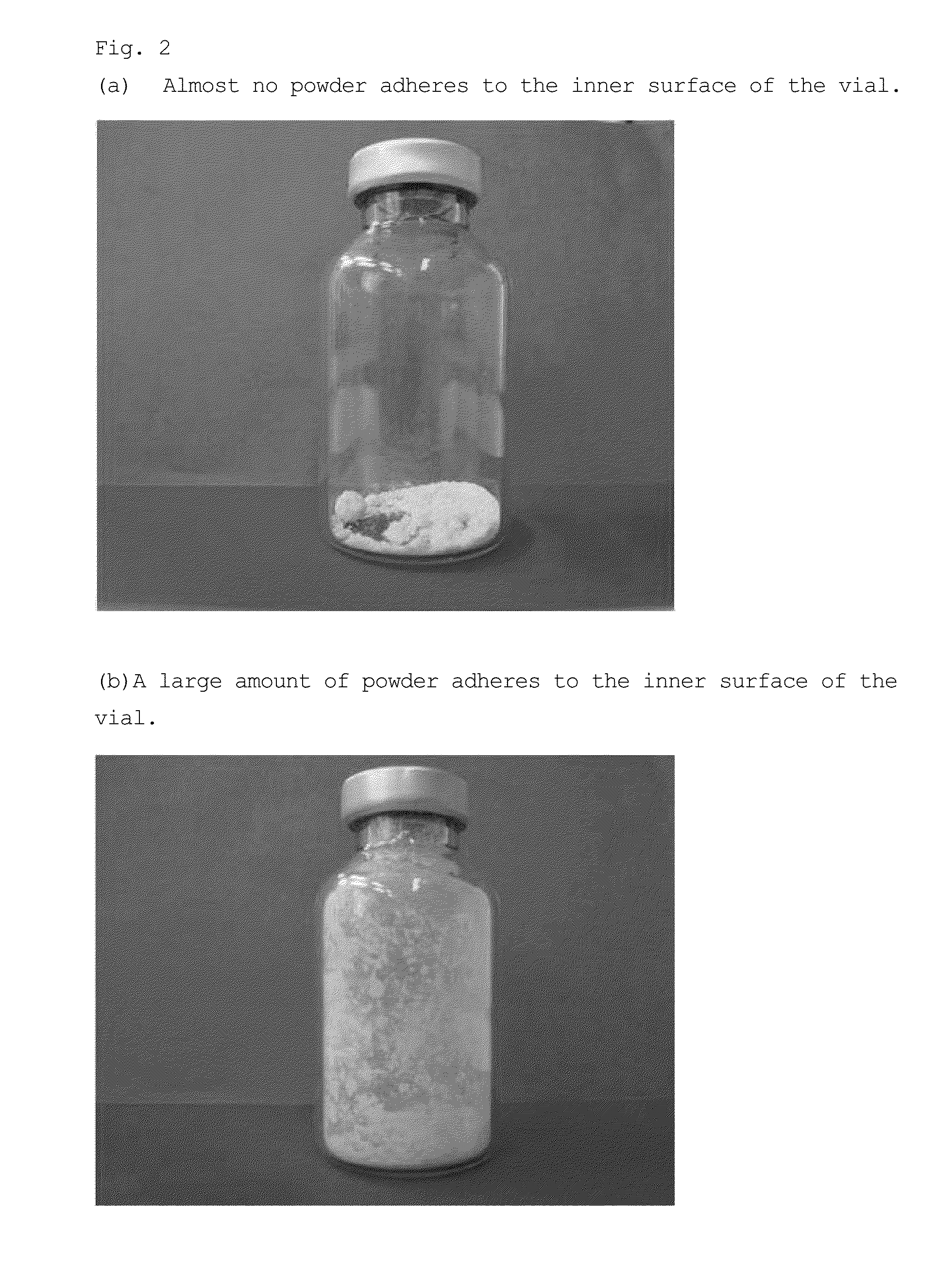Glass container and method for manufacturing same
- Summary
- Abstract
- Description
- Claims
- Application Information
AI Technical Summary
Benefits of technology
Problems solved by technology
Method used
Image
Examples
example 1
(1) Pretreatment with a Silane Coupling Agent
[0080]A silane coupling agent (KBE-903, 3-aminopropyltriethoxysilane) was diluted with purified water to prepare a solution in which the concentration of the silane coupling agent was 0.5% by weight. This solution was applied to the inner surface of a vial (inner capacity of 20 mL, made of borosilicate glass; same hereunder). The vial was drained by centrifugation and baked at 100° C. for 30 minutes, thereby producing a vial treated with the silane coupling agent.
(2) Fluorine-Containing Resin Coating
[0081]An amorphous fluorine-containing resin (Teflon AF) was diluted with a fluorine-containing inert liquid (Fluorinert FC-40, produced by Sumitomo 3M Limited) to prepare a solution in which the concentration of the amorphous fluorine-containing resin was 4%.
[0082]This solution was applied to the inner surface of the vial obtained in (1) above, which had been treated with the silane coupling agent. The resulting vial was drained by centrifuga...
example 2
[0084]An amorphous fluorine-containing resin (Cytop M) was diluted with a fluorine-containing inert liquid (Fluorinert FC-40, produced by Sumitomo 3M Limited) to prepare a solution in which the concentration of the amorphous fluorine-containing resin was 4%.
[0085]This solution was applied to the inner surface of the vial obtained in (1) of Example 1, which had been treated with the silane coupling agent. The resulting vial was drained by centrifugation and baked at 100° C. for 20 minutes and at 250° C. for 30 minutes, thereby producing an inner-surface-treated vial.
example 3
(1) Pretreatment with a Silane Coupling Agent
[0086]A silane coupling agent (KBM-13, methyltrimethoxysilane) was diluted with purified water, and acetic acid was added thereto to adjust the pH to 4, thereby preparing a solution in which the concentration of the silane coupling agent was 2.0% by weight. This solution was applied to the inner surface of a vial. The vial was drained by centrifugation and baked at 200° C. for 30 minutes, thereby producing a vial treated with the silane coupling agent.
(2) Fluorine-Containing Resin Coating
[0087]An amorphous fluorine-containing resin (Teflon AF) was diluted with a fluorine-containing inert liquid (Fluorinert FC-40, produced by Sumitomo 3M Limited) to prepare a solution in which the concentration of the amorphous fluorine-containing resin was 1%.
[0088]This solution was applied to the inner surface of the vial obtained in (1) above, which had been treated with the silane coupling agent. The resulting vial was drained by centrifugation and bak...
PUM
| Property | Measurement | Unit |
|---|---|---|
| Electrical resistance | aaaaa | aaaaa |
| Thermal resistance | aaaaa | aaaaa |
| Water repellent | aaaaa | aaaaa |
Abstract
Description
Claims
Application Information
 Login to View More
Login to View More - R&D
- Intellectual Property
- Life Sciences
- Materials
- Tech Scout
- Unparalleled Data Quality
- Higher Quality Content
- 60% Fewer Hallucinations
Browse by: Latest US Patents, China's latest patents, Technical Efficacy Thesaurus, Application Domain, Technology Topic, Popular Technical Reports.
© 2025 PatSnap. All rights reserved.Legal|Privacy policy|Modern Slavery Act Transparency Statement|Sitemap|About US| Contact US: help@patsnap.com



